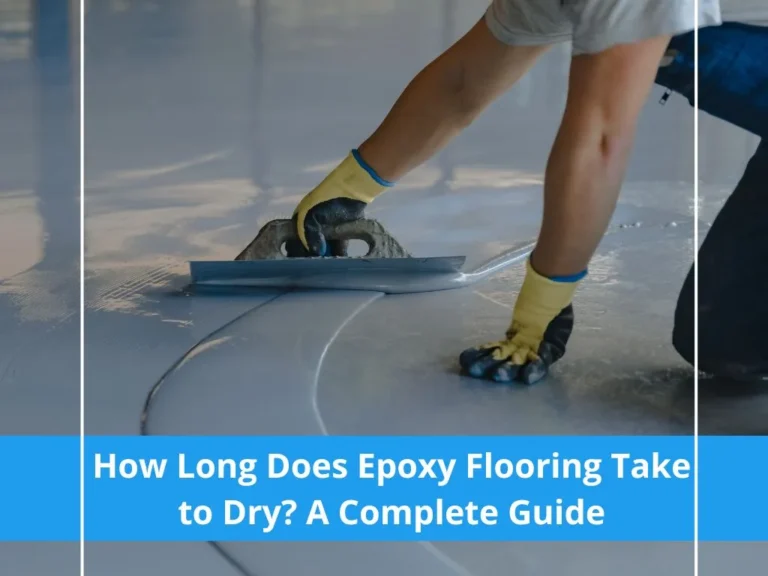How to Clean Epoxy Floors in Austin – Simple Guide
Your epoxy floor looks amazing right now. But Austin’s dust, heat, and daily wear can make it dull fast. The good news? Cleaning epoxy floors in Austin is easier than you think. You just need the right approach. This guide provides you 8 simple steps to keep your epoxy floor shiny and protected for years. No fancy equipment needed, just smart cleaning habits.
How to Clean Epoxy Floors in Austin?

Cleaning epoxy floors means sweeping often and mopping with mild solutions. Use a soft broom daily to sweep away debris and grime. Once a week, mop with warm water mixed with some drops of dishwashing soap or diluted ammonia. Clean up spills immediately to block stains. Avoid using harsh chemicals such as citrus-based cleaners, bleach, or vinegar, because they can damage the shiny finish. Austin’s dusty climate needs more frequent sweeping than other cities. Stick with soft tools, rinse thoroughly, and your floor will stay shiny for 15-20 years with minimal effort.
Necessary Tools and Things for Cleaning
You don’t need expensive equipment. Here’s what works:
Tools:
- Soft-bristle broom or dust mop
- Microfiber mop (avoid cotton)
- Two buckets (cleaning solution and rinse water)
For Preparing Cleaning Solutions:
- Mild dish soap
- Clear ammonia (for diluting)
- Hot water
- pH-neutral epoxy cleaner (optional)
For Tough Jobs:
- Shop vacuum
- Soft nylon scrub brush or deck brush
- Squeegee
- Clean cloths or paper towels
What to Skip:
- Steel wool or metal brushes
- Abrasive pads or scouring pads
- Stiff-bristled brooms
Keep it simple. Soft tools and gentle cleaners are your best friends.
Step-by-Step Guide to Clean Epoxy Floors
Follow these steps for a clean epoxy floor every time:
That’s it. 8 simple steps to keep your floor looking professional.
Why Does Cleaning Epoxy Floors Matter?
Regular cleaning protects your investment. Austin’s dusty air means dirt and sand get tracked onto your floor constantly. When you walk or drive over embedded grit, it scratches the coating. Over time, these tiny scratches make your floor look worn and dull.
Clean floors also prevent safety issues. Oil, grease, or sticky spills create slip hazards. In Austin’s summer heat, some chemicals set faster on warm surfaces. Quick cleaning prevents permanent staining.
For businesses, clean floors show professionalism. Customers notice. For homeowners, maintained floors protect property value. A well-kept epoxy floor can last between 15 to 20 years. Neglected floors need repairs or replacement after just 5-10 years.
Plus, cleaning takes only 15-20 minutes for most garage spaces.Investing a little time now can protect for years to come.
5 Benefits of Regular Epoxy Floor Cleaning
- Longer Floor Life: Removing dirt and chemicals prevents damage to the coating. Your floor reaches its full 15-20 year lifespan instead of failing early.
- Keeps the Shine: Weekly cleaning maintains that glossy, showroom look. Austin’s dust won’t dull the finish if you stay on top of it.
- Safer Workspace: Clean floors mean no slip hazards from oil, water, or chemical spills. This matters in busy garages and commercial areas.
- Saves Money: Catching stains early costs nothing. Waiting until they set permanently means expensive recoating or refinishing.
- Better Air Quality: Dust on floors gets kicked into the air. Regular sweeping improves indoor air quality in enclosed spaces like garages and workshops.
Common Mistakes to Avoid When Cleaning Epoxy Floor
Don’t make these errors that damage your investment:
- Using Harsh Chemicals: Bleach, vinegar, citrus cleaners, and pure ammonia strip the coating. They cause yellowing, dullness, and permanent damage. Stick with mild solutions only.
- Scrubbing with Abrasive Tools: Steel wool, wire brushes, and rough scouring pads scratch the surface. Once scratched, your floor loses its protective layer and looks worn.
- Letting Spills Sit: Engine oil, battery acid, antifreeze, and chemicals stain epoxy if left overnight. Always clean spills within a few minutes.
- Using Too Much Soap: Heavy soap leaves a filmy residue that makes floors slippery and dull.
- Applying Vinegar or Citrus Products: These acidic cleaners eat away at the epoxy finish. They remove shine and cause permanent discoloration. Never use them.
- Skipping Regular Sweeping: Letting dirt pile up means every step grinds particles into the coating. Sweep high-traffic areas twice weekly, minimum.
- Using Cotton or Natural Fiber Mops: Natural mops shed fibers that stick to epoxy. Always use synthetic microfiber mops.
- Dragging Heavy Items: Moving equipment or furniture by dragging scratches the surface. Always lift.
Additional Tips to Clean Epoxy Flooring
- Handle Tire Marks: Hot tire marks from parking in Austin’s heat need attention. Apply diluted degreaser, and allow it to sit for 5 to 10 minutes. Then, scrub using a soft brush and rinse it entirely. Wait until the floor cools down for easier removal.
- Remove Rust Stains: Mix equal parts water and lactic acid-based cleaner. Apply to rust spots, wait 3-5 minutes, scrub gently, and rinse completely.
- Deal with Cedar Pollen Season: Austin’s spring pollen sticks to everything. Sweep it away before it gets wet and creates sticky patches. Don’t let pollen sit for more than 2-3 days.
- Focus on High-Traffic Areas: Entry zones and work areas need more attention. Sweep these spots daily and mop them twice weekly instead of weekly.
- Seasonal Deep Cleaning: Every three months, do a thorough cleaning. Move everything off the floor to reach hidden corners where grime builds up.
- Use Mats: By using entry mats at doorways to capture dirt before it arrives on your floor. Choose non-slip backing for safety.
- Protect During Projects: Put cardboard under car jacks, welding equipment, or heavy tools. These small steps prevent permanent marks and burns.
How to Maintain a Clean Epoxy Floor For Longevity
Long-term care keeps your floor perfect for decades:
Create Your Cleaning Schedule
- Daily: Sweep high-traffic areas
- Weekly: Mop the entire floor with a mild cleaner
- Monthly: Deep clean with ammonia solution
- Quarterly: Move everything and clean hidden areas
- Yearly: Inspect for damage and address issues
Watch What You Put Down: Be careful with sharp objects and heavy equipment. Don’t drag metal furniture or tools across the surface. Austin’s heat can make some materials expand, so they lift rather than slide.
Control Temperature Exposure: Epoxy handles Austin’s heat well. But sudden extreme changes stress the coating. Let hot equipment cool before placing it on the floor.
Inspect Regularly: Look for small cracks, chips, or dull spots monthly. Catching problems early means simple fixes instead of full refinishing.
Address Spills Immediately: Keep paper towels or shop rags handy. Wipe up chemicals, oils, and liquids within minutes. Don’t wait.
Recoat When Needed: High-traffic commercial areas may need a fresh topcoat after 10-12 years. Residential floors can last 15-20 years. Recoating costs much less than full replacement and makes your floor look brand new.
Protect During Construction: If you’re doing renovation work, cover the floor with protective material. Construction debris damages coatings quickly.
Understanding Austin’s Unique Challenges
Austin creates specific cleaning challenges you won’t find everywhere:
- Dust and Pollen: Our dry climate means constant dust. Spring brings heavy pollen from cedar, oak, and pecan trees. Sweep more often during pollen season (December-February and March-May).
- Extreme Heat: Summer temperatures over 100°F can make tire marks stick faster. Hot surfaces also make some chemicals penetrate quicker. Clean spills immediately during hot months.
- Sudden Storms: When it finally rains, tracked-in mud can scratch floors. Keep extra mats at entries during wet weather.
- Limestone Dust: Austin sits on limestone. Construction and landscaping projects create fine white dust that gets everywhere. This dust is abrasive, so sweep it promptly.
When to Call Professionals for Cleaning Your Floor
Sometimes you need expert help:
- Severe Staining. If DIY methods don’t remove deep stains, professionals have specialized equipment and products.
- Surface Damage Cracks, chips, or peeling need professional repair to prevent further damage.
- Dullness That Won’t Buff Out. Persistent dullness might indicate coating breakdown. Professionals can assess whether you need recoating.
- Annual Deep Clean: Consider hiring professionals once yearly for a thorough deep clean with commercial equipment.
At Epoxy Flooring Austin, TX, we offer maintenance services and repairs. Contact us if your floor needs more than routine cleaning.
Conclusion of How to Clean Epoxy Floors in Austin, TX
Cleaning epoxy floors in Austin doesn’t require fancy products or complicated routines. Sweep often with soft brooms. Mop weekly with mild dish soap or diluted ammonia. Wipe spills immediately. Avoid harsh chemicals like bleach, vinegar, and citrus cleaners. Stick with soft tools.
Austin’s dusty, hot climate means you’ll sweep more than folks in humid regions. But that’s a small price for a floor that looks great and lasts 15-20 years.
The three golden rules: sweep regularly, clean spills fast, and use gentle products. Follow these basics, and your floor will maintain its shine for a long time.
Whether you have a garage floor, warehouse, or showroom, these simple steps protect your investment. At Epoxy Flooring Austin TX, we install floors built to last. Proper cleaning ensures they reach their maximum potential.
Need help with tough stains, damage repair, or professional deep cleaning? We’re here to help. Contact us for expert advice and service across Austin and the surrounding areas.



